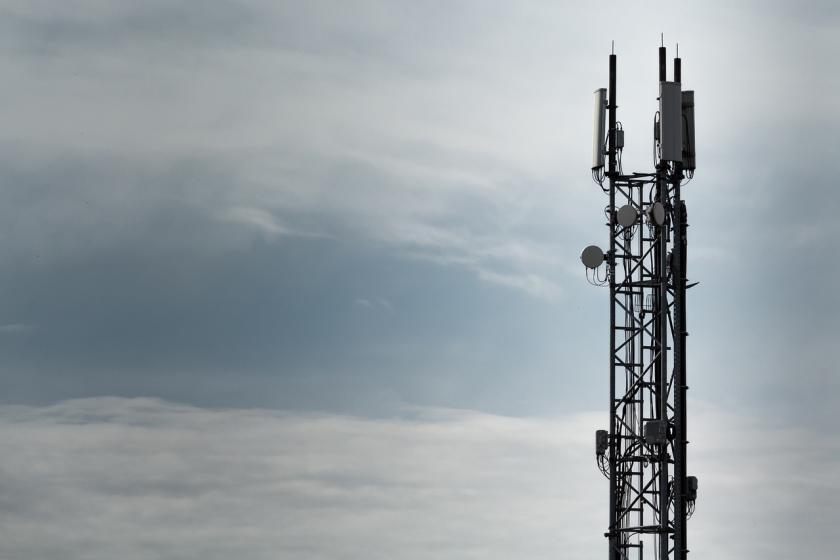The Building − and Business − Behind 5G ServicesThe Building − and Business − Behind 5G Services
The deployment of 5G services is underway. But an aggressive business and technology plan will be required for operators to truly move the needle in 2019.
April 4, 2019

The allure of 5G is undeniable, but there’s no denying that operators have a long way to go to justify widescale 5G service deployments in the U.S.
The initial deployment and trial plans for 5G services in the U.S. announced late last year and at the Mobile World Congress conference earlier this year grabbed headlines. But an aggressive business and technology plan will be required for operators to truly move the needle in 2019.
What factors go into the rollout of 5G for service providers? And what blanks need to be filled in?
Infrastructure
Spectrum: Though U.S. carriers have already spent big on spectrum to support super-fast 5G services, some need more for broader deployment. Verizon and AT&T claim they’re all set, while Sprint and T-Mobile would improve their situation by merging.
Antennas: 5G services are being built using small cell technology because antennas can support many hundreds of devices – and at far higher speeds. Smaller cells are required as 5G uses far higher radio frequencies that cover shorter distances when compared to 4G systems. As a result, expect to see far more – and much smaller - 5G antennas. They can be located as close as 500 feet apart.
A small cell architecture will be used to create centralized radio-access networks, provide fiber to the antenna connections and to handle heavy backhaul.
Also expect macro-network densification, which requires new antennas to help carriers move from 4G to 5G systems.
Wired Network Spending
Wired network infrastructure will need to be ratcheted up significantly to support mobile cellular 5G services.
Carriers need to invest heavily in their wireline infrastructure which means expansion – and increased density - of their fiber broadband networks. But will they be able to justify spending for broadband broadly throughout the U.S.? This raises economic and social issues from the past.
Haves and Have Nots
Network infrastructure spending has always been a far easier sell/justification in densely populated urban areas such as cities. But what of outer areas and sparsely populated rural regions?
It seems certain that some form of incentive(s) will be required in any effort to span the Digital Divide.
From the glass half full folks, wireless carriers will spend to enhance and expand slower speed service in rural regions in tandem with the rollout of 5G services in big cities and other urban areas.
What’s the Plan?
With average revenue per user (ARPU) in continue decline for current wireless services, how can carriers justify big spending for 5G service deployment? The answers could be compensative plans for consumers, combined with pricey 5G phones. Both seem certainties, especially when you consider that though ARPU is decreasing, while data usage is climbing fast.
Phone makers have not released pricing for their 5G phones. Verizon did, however announced prices for its 5G Home offering, which is a wireless broadband Internet service, not a mobile 5G service.
Verizon 5G Home launched in four U.S. cities, it costs a $50 monthly charge (after three months free) for its pre-standard offering for those with a qualifying plan. (Non-Verizon customers will pay $70 a month). The carrier quotes average upload speeds between 300 and 940 megabits per sec. Phone pricing is not yet available.
The Global Challenge
The success of the services will be heavily reliant on national governments and regulators. Most notably, the speed, reach and quality of 5G services will be dependent on governments and regulators supporting timely access to the right amount and type of spectrum, and under the right conditions.
5G needs “a significant amount of new harmonized mobile spectrum. Regulators should aim to make available 80- 100 MHz of contiguous spectrum per operator in prime 5G mid-bands (e.g. 3.5 GHz) and around 1 GHz per operator in millimeter wave bands (i.e. above 24 GHz),” the GSMA report claims.
5G also needs spectrum “within three key frequency ranges to deliver widespread coverage and support all use cases,” added the GSMA report. The three ranges are sub-1 GHz, 1-6 GHz and above 6 GHz.
Outside the U.S., making a business case for 5G rollouts is difficult. In fact, a survey of 45 telco CTOs released by McKinsey & Co. “Cutting through the 5G hype: Survey shows telco’s nuanced views,” reveals that less than 20% have a commercial strategy.
Going Mobile
It appears the data traffic demand needed to help justify mobile 5G deployments exists.
Cisco’s latest VNI Global Mobile Data Traffic Forecast projects large increases in mobile data traffic:
“Although mobile data traffic had historically been a small percentage of overall global IP traffic, mobile data traffic is expected to grow at a 46 percent Compound Annual Growth Rate from 2017 to 2022, two times faster than the growth of global IP fixed traffic during the same period.” By 2022, the Cisco forecast adds, “mobile data traffic will represent 20 percent of global IP traffic.”
Read more about:
5GAbout the Author
You May Also Like




